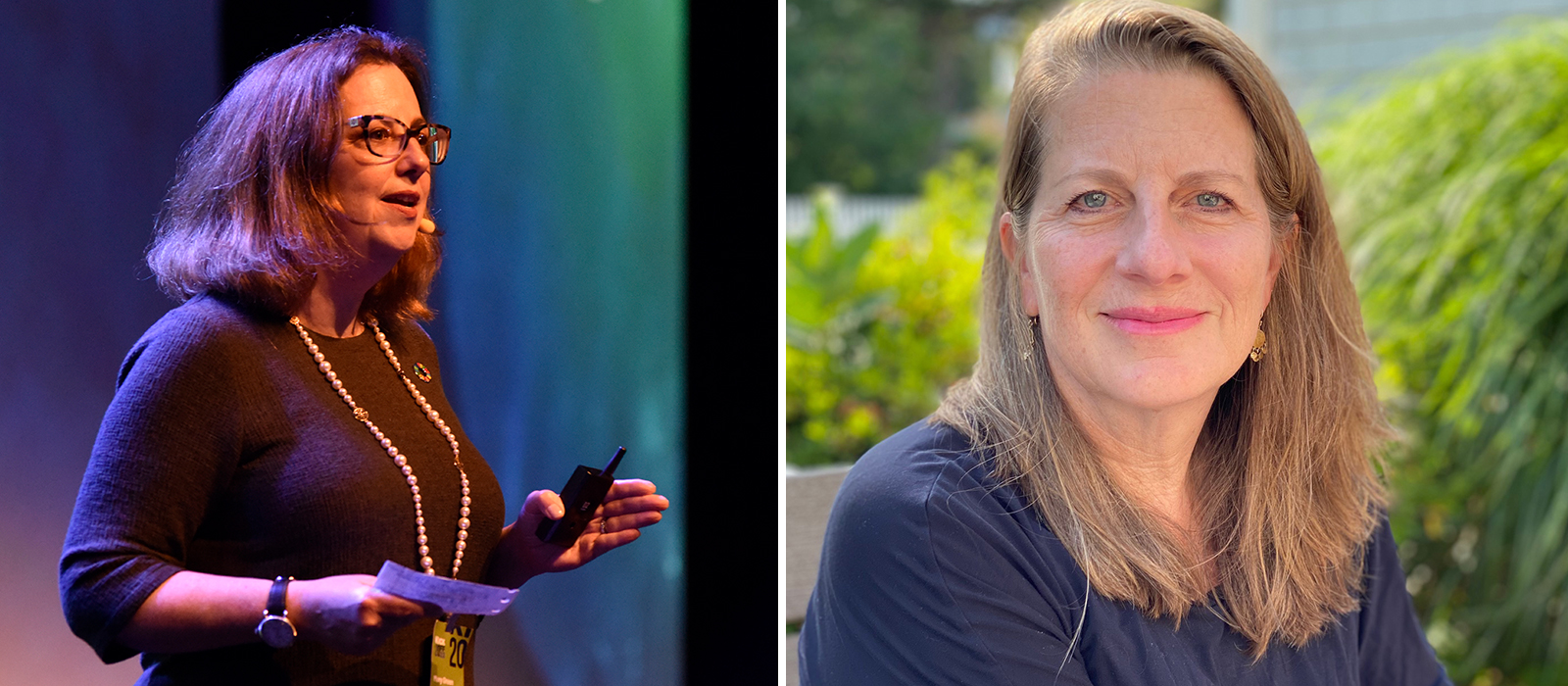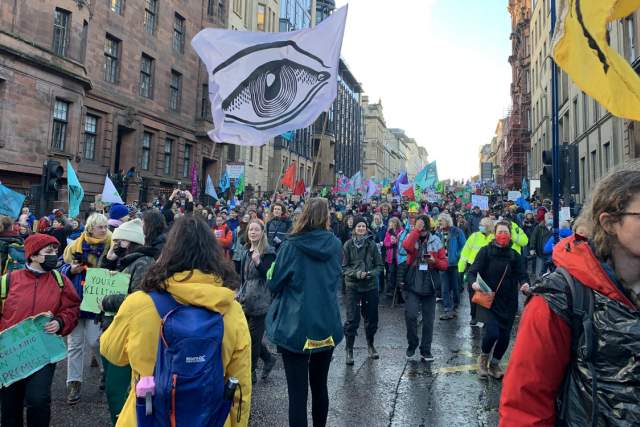Finance 2.0: On the Prevalence of ESG Investing

(left) Mary Flounders Green D’88, T’95, Client Portfolio Manager, Federated Hermes; (right) Tricia Winton D’83, T’89, Global Head of ESG, Bain Capital
O nce perceived a niche investment strategy, environmental, social, and governance (ESG) investing is moving into the mainstream, as investors discover new opportunities to pair purpose with profit.
“There’s no doubt in my mind that the pandemic, coupled with the looming climate crisis and the racial and ethnic crises have really heightened the importance and buy-in of ESG globally,” says Tricia Winton D’83, T’89, the Global Head of ESG at Bain Capital, which has approximately $160 billion in assets under management. “There really is only positive momentum in the ESG space now. The ecosystem is in full force.”
Research reveals that ESG standards and good corporate responsibility practices lower the corporate cost of capital, result in better operational behavior and improve stock price performance. In fact, as of October 2021, there is an estimated $3.1 trillion of private capital assets managed by firms that have integrated ESG principles, according to Preqin. In public markets, 2021 marked a record year for ESG—with $120 billion allocated toward sustainable investments—double $51 billion in 2020, according to Bloomberg data.
There’s no doubt in my mind that the pandemic, coupled with the looming climate crisis and the racial and ethnic crises, have really highlighted the importance and accelerated the buy-in of ESG globally.
—Tricia Winton D’83, T’89
In addition, the COVID-19 pandemic and calls for racial justice have sharpened the focus on stakeholder management and made issues like equity ever more salient. Take board diversity, for example, an area ripe with potential. More companies are recognizing the value of including women and people of color on their boards. According to research from ISS Corporate Solutions, nonwhite directors occupy 4,500 board seats—25 percent more than at the end of 2020—among businesses in the Russell 3000 stock index. Women of all ethnic backgrounds account for 27 percent, up slightly from 24 percent.
This area continues to be a top priority for Bain Capital. “We’re seeking to have more diverse boards within all our portfolio companies,” Winton says. “We aspire to have at least 30 percent overall board diversity and more than two diverse directors per board.” To help achieve that goal, Bain Capital has partnered with Directors Academy, to support its “Next-Gen” directors program, which provides governance, education and training for future corporate board members from diverse backgrounds and who are underrepresented on boards today.
Board diversity is just one avenue within ESG to explore. At Tuck, students have plenty of opportunities to study these issues and gain exposure in ESG. The Revers Center for Energy, Sustainability, and Innovation and the Center for Business, Government & Society engage students through workshops, conferences, and competitions that explore timely ESG topics. Students have also traveled to New York to meet with leading ESG investors to learn more about sustainable investing first-hand from experts in the field.
“ESG really does extend beyond just excluding fossil fuel companies,” says Mary Flounders Green D’88, T’95, a client portfolio manager with Federated Hermes, a $631 billion global investment manager that was one of the founding signatories of the UN Principles of Responsible Investing back in 2006. “There are many different approaches and many different levels of commitment to ESG investing.”
Take biodiversity, for instance, “our newest area of impact investing,” Green says. This exciting trend, which many say is the next big thing in ESG, aims to restore nature loss and help reverse the detrimental effects of human impact. The World Wildlife Fund estimates that since 1970,
the population of various species has dropped 68 percent. This ecosystem is essential not just for the survival of animals and plants but humans as well, given that many medicines and vaccines come from plants, fungi and bacteria, an incredibly timely topic.
“Biodiversity is really linked to human health. Consider the roots of the pandemic—Covid originated as a zoonotic pathogen. Governments around the world cut back on economic activity in the first year of the pandemic in order to protect the health of citizens as vaccines were developed. The pandemic presented some of the biggest ESG decisions of our lifetimes,” she says.
I took up yoga and meditation years ago in order to deal with the stress of having a financial job. I believe that you most give to the world what you most want from the world.
—Mary Flounders Green D’88, T’95
Fortunately, finance can play a key role in alleviating biodiversity loss by allocating capital toward projects that tackle big issues such as waste management, plastic recycling, and hazardous chemical management. Biodiversity projects can also help protect insects, which are essential to food pollination. It can also help restore forests and grasslands, two ecosystems that are considered the second most effective solution to climate change after switching from fossil fuels.
Green says that biodiversity impact investing and other ESG strategies are further advanced in Europe, where “you must disclose the positive and negative impacts of your investments and consider sustainability in your retirement programs.” She believes it’s only a matter of time before biodiversity and other thematic strategies catch on in the U.S. with better availability of data and continued acceptance of ESG.
Changing consumer preferences and regulatory policy are shaping demand for ESG—there are several proposals currently under review, including a Securities and Exchange Commission (SEC) proposed rulemaking on Climate Change Disclosures for Public Companies. “I predict that eventually, it’s not going to be called ESG investing,” Green says. “It’s just going to be called ‘investing.’ ESG is going to be ubiquitous 10 or 15 years down the road and far more widespread than it is today.”
Better data will drive further adoption, especially when it’s “more readily available, more comparable, and more standardized,” whether that’s having reliable figures on greenhouse gases, water deforestation, labor conditions for workers, or board structure and diversity.
“I think once that happens, ESG is just naturally going to become more pervasive,” she says.
“Having an expanded set of data and considerations help us make more informed investment decisions, allowing for a 360-degree view of risk and opportunity.”
This story originally appeared in print in the summer 2022 issue of Tuck Today magazine.

